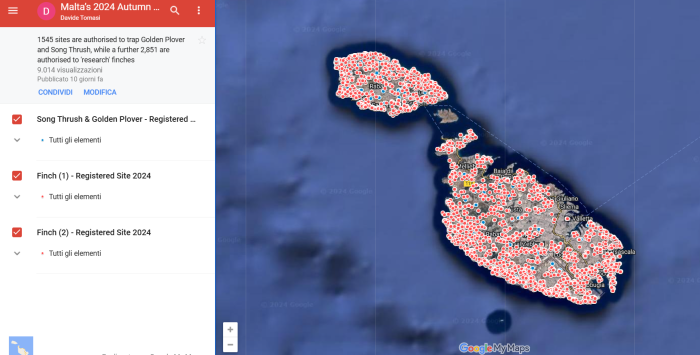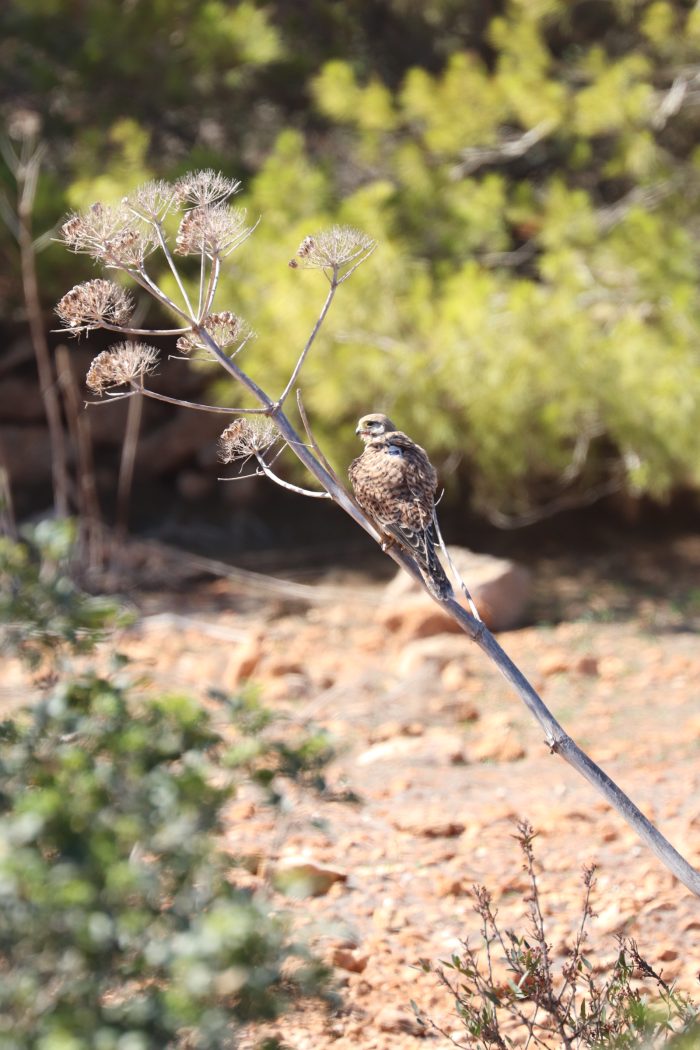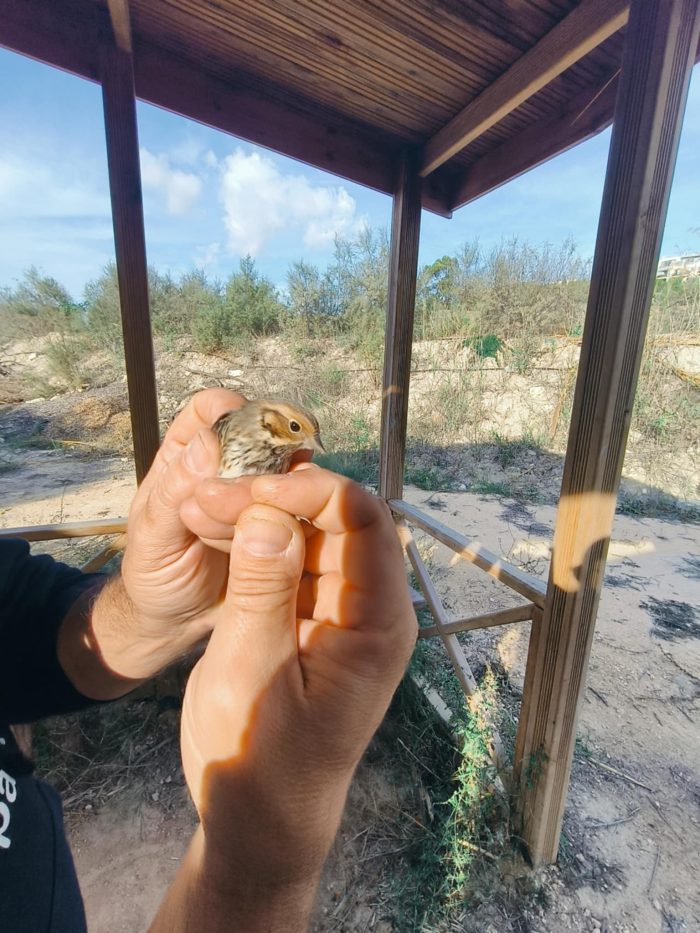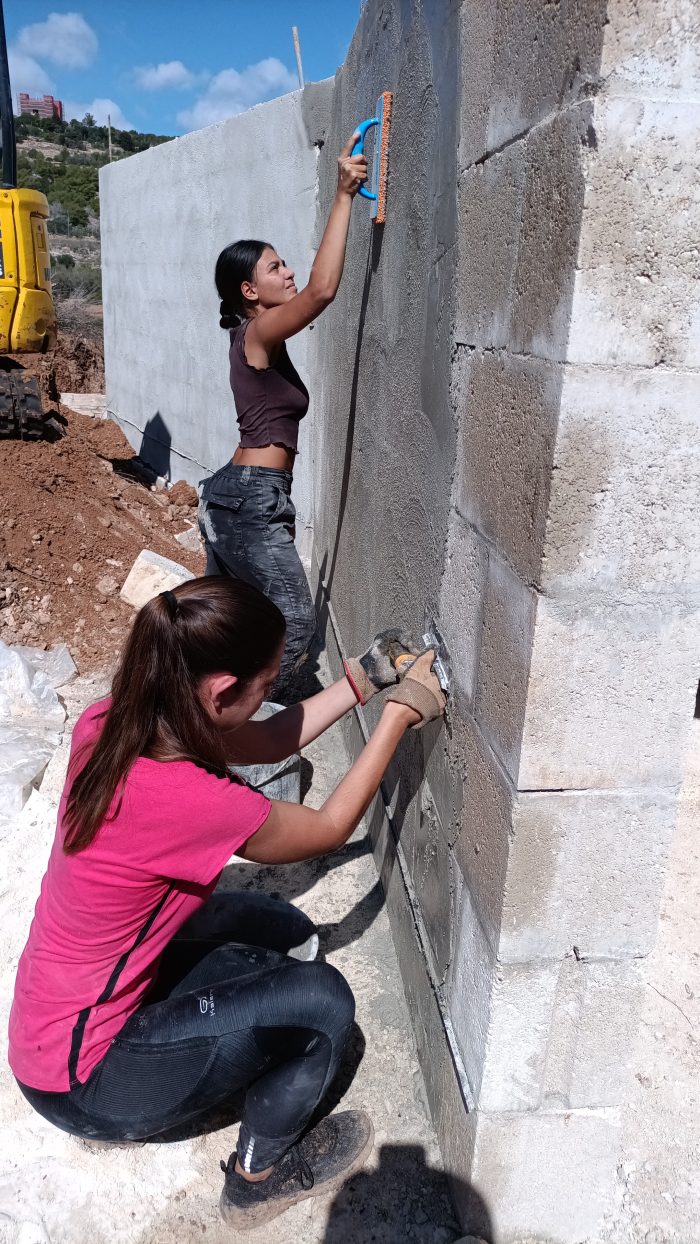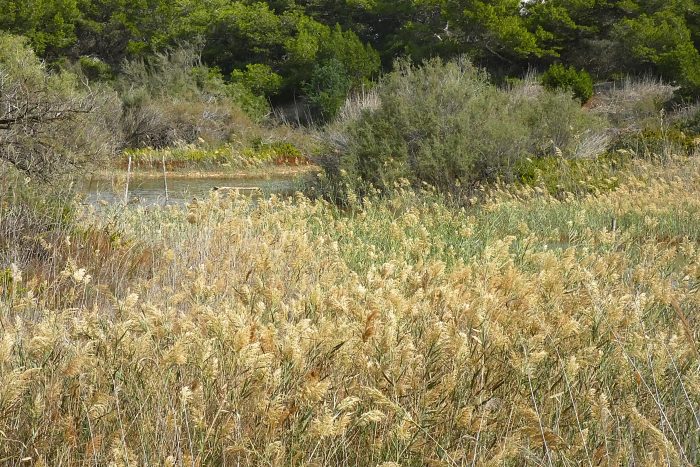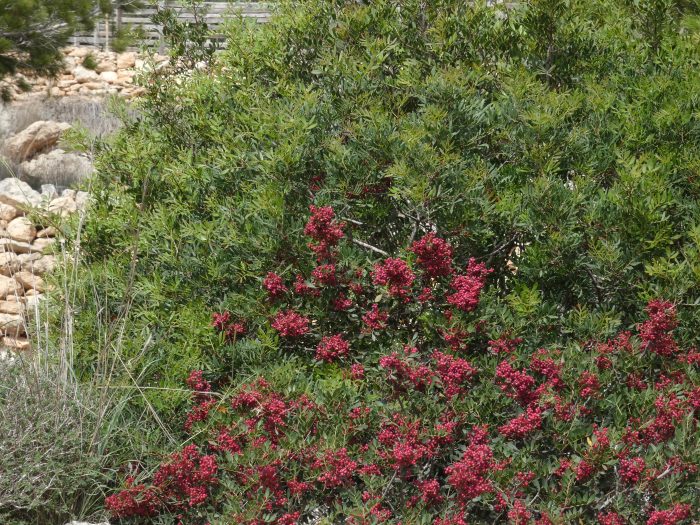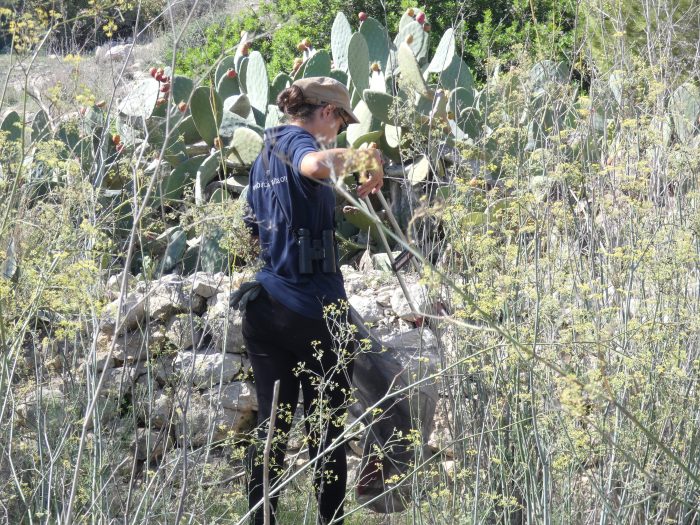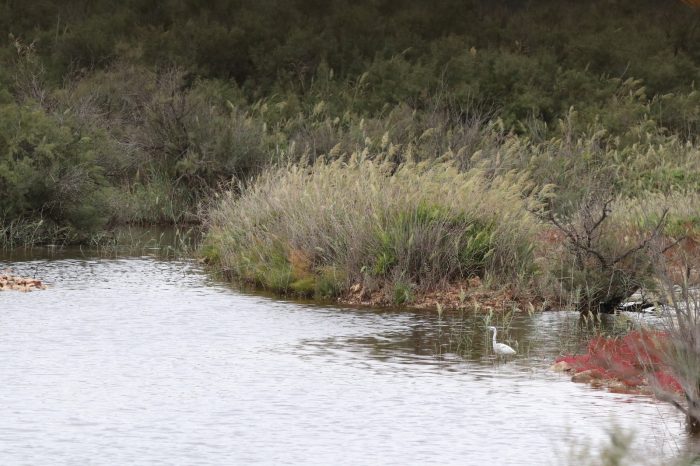On the frontlines is our monthly newsletter section covering the activities of BirdLife Malta’s conservation, policy and nature reserve (Salina, Simar, Għadira and Foresta 2000) teams, together with an update about rare and scarce bird species observed.

Trapper charged for trapping on unregistered trapping site
On Tuesday, 5th November, a trapper was sentenced by the court in Valletta to a fine of €700 and a two-year suspension of his trapping license. The man had been reported for trapping on an unregistered site to the Environmental Protection Unit (EPU) in San Ġwann in November 2023. Although the officers did not catch the individual in the act, he was later identified through footage provided by a BirdLife Malta team. On the day of the report, EPU officers confiscated the nets and 15 finches used as live decoys at the trapping site.
Opening of the trapping season
Despite trapping being non-compliant with the European Birds Directive, as it is considered an unsustainable method of taking wild birds, Malta has once again allowed the 2024 trapping season through a derogation. This autumn, trapping is permitted from 20th October 2024 to 10th January 2025 for two species: Song Thrush (20th October–31st December) and Golden Plover (1st November–10th January).
Under the guise of a research project, the government has also declared a finch trapping season open once again. This decision comes despite a ruling on 19th September 2024, which found Malta guilty of breaching the Birds Directive. Trappers are now permitted to trap Greenfinch, Goldfinch, Hawfinch, Chaffinch, Serin, Linnet, and Siskin from 20th October to 20th December 2024, inclusive. According to regulations, trappers are required to release the birds shortly after capture, record details of any ringed birds, and submit this information to the Wild Birds Regulation Unit (WBRU).
Our Conservation team is back in the field to ensure that any illegal trapping activities are reported to the Environmental Protection Unit (EPU). If you witness finches not being released or observe trapping on unauthorized sites, please report these incidents to us or contact the EPU directly at 119.
The public WBRU map, which displays all registered trapping sites for Golden Plover, Song Thrush, and finches, is available below.
We strongly invite you to have this map handy to help us finding illegalities.
Rescue, Rehab, Release
Autumn is coming to an end, bringing the great migration of many bird species to a close. This time of year is always particularly busy for us. Many of the birds we rescue during these months have been injured due to human activities, including illegal hunting, collisions with windows, and poisoning from insecticides.
Since the beginning of October, Scopoli’s shearwaters have started to leave their nests at night. Often confused, and disoriented by artificial lights, they can end up stranded on the coast, unable to take flight. This year, we have rescued 21 Scopoli’s shearwaters, nearly all of which have been successfully released. These birds have very specific needs and can be challenging to care for, so we’re thrilled with the success of our efforts!
This year, we’ve seen an increase in birds landing on fish farm oil, which damages their feathers, leaving them unable to swim or even withstand light rain. One of the most remarkable cases we encountered was a Grey Heron, found by a member of the public near one of these farms in September. The bird had been affected by the oil and spent several weeks with us to recover. After multiple washes and careful care, we were able to release it back into the wild at Għadira Nature Reserve.
The release of several protected species in Comino was an incredibly emotional moment for us. Among them were Honey Buzzards, Eurasian Hobbies, and Common Kestrels, all victims of illegal hunting. Some had broken bones from shotgun pellets, while others had severe wounds. You can watch the live release here.
One of the Kestrels we released on one such occasion was fitted with a GPS tracker. To our surprise and excitement, we discovered that the very same day, the bird flew across the sea and landed in Tunisia! Learn more here.

Salina Nature Reserve
Sightings
In October, Salina fills up with gulls and it assumes a life of its own. Hundreds of gulls, sometimes in the thousands, pack the dykes between the saltpans with frequent quarrels, a lot of chasing about with their constant shrill calls. Every time one of the resident Grey Herons decides to have a little fly around, all the gulls take to the air as they fear all large birds since these might be birds of prey. However, the Grey Herons pay no attention to the gulls and do their own thing. Lots of Little Egrets were also present daily, feasting of the plentiful killifish. These fish are also the mainstay of the resident, Black-necked Grebes that dive to chase the fish like miniature penguins. The resident Kingfishers also dive for the fish, but in a completely different fashion, like a dart from a suitable perch. Special birds did not disappoint, with a very rare Little Bunting and a Water Rail, both birds were ringed in the wetland area.
Works and visits
In support of the major works for the new hide in Għadira nature Reserve, the joinery works were undertaken at Salina to construct the benches and other woodworks required. However, maintenance at Salina did not stop, in fact two large water pumps had to be taken apart for repairs. On the other hand a contractor was brought in to repair the roof of the Visitors Centre and waterproof it. New shelves were constructed and installed in the kitchen to make space for storage of crockery.
The latter was necessary as we hosted the first group of senior citizens, hailing from Kalkara Local Council. This was a big success and augurs well for similar events. In addition, another edition of the Sip, Savour and Soak in Nature was held with a full house of attendees. The popularity of these activities give us the energy to organise more similar activities. Another activity organised was a bird ringing live demonstration under the gazebo at the wetland, which was fully booked.
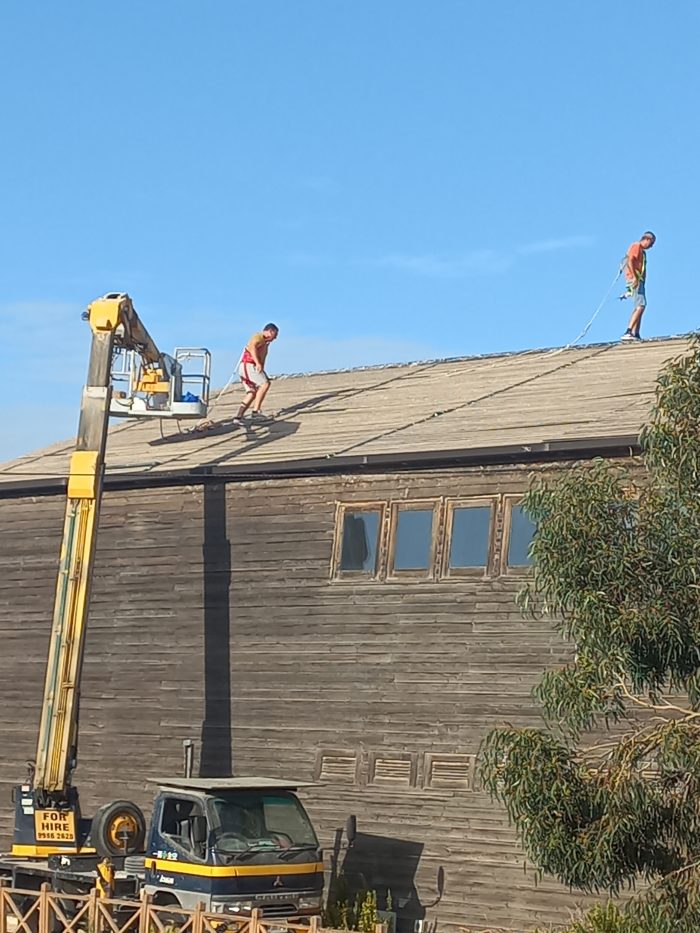
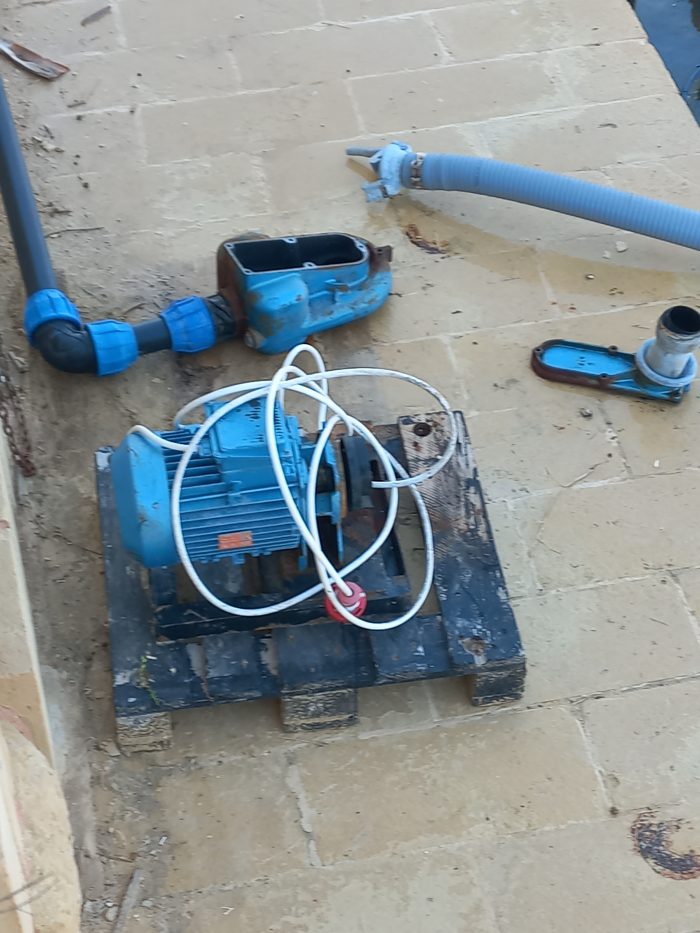
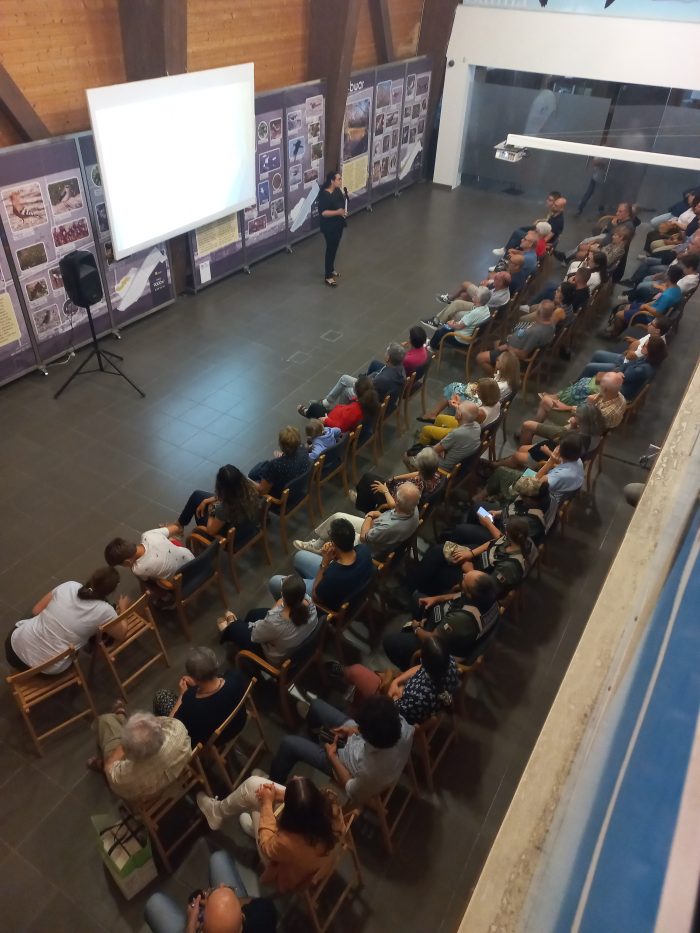
Għadira Nature Reserve
Sightings
October at Għadira Nature Reserve welcomed the arrival of the main wintering species in moderate numbers. Robins increased gradually throughout the month, reaching their peak towards the end. Daily sightings included two Black-necked Grebes, a Little Grebe, and a Common Coot, while Moorhen numbers saw a significant rise. Chiffchaffs, White Wagtails, Common Starlings, and Blackcaps were all observed in good numbers, while Song Thrushes were recorded frequently, but in low numbers.
Wader species spotted this month included Dunlin, Common Snipe, Ringed Plover, Little Ringed Plover, Common Sandpiper, and Common Redshank. Grey Herons were regularly seen, along with occasional sightings of Purple Heron, Night Heron, Cattle Egret, and Little Egret. Additional species that made sporadic appearances included Common Teal, Wryneck, and Corn Bunting.
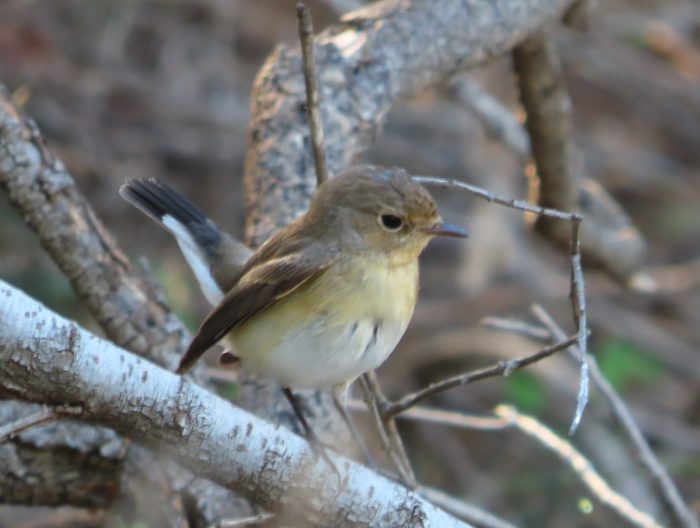
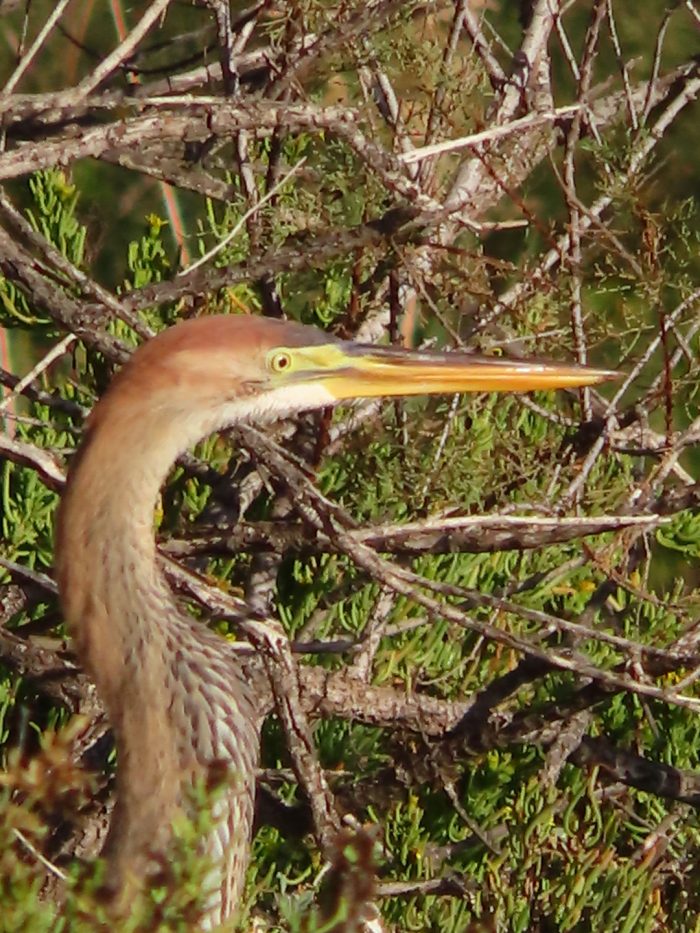
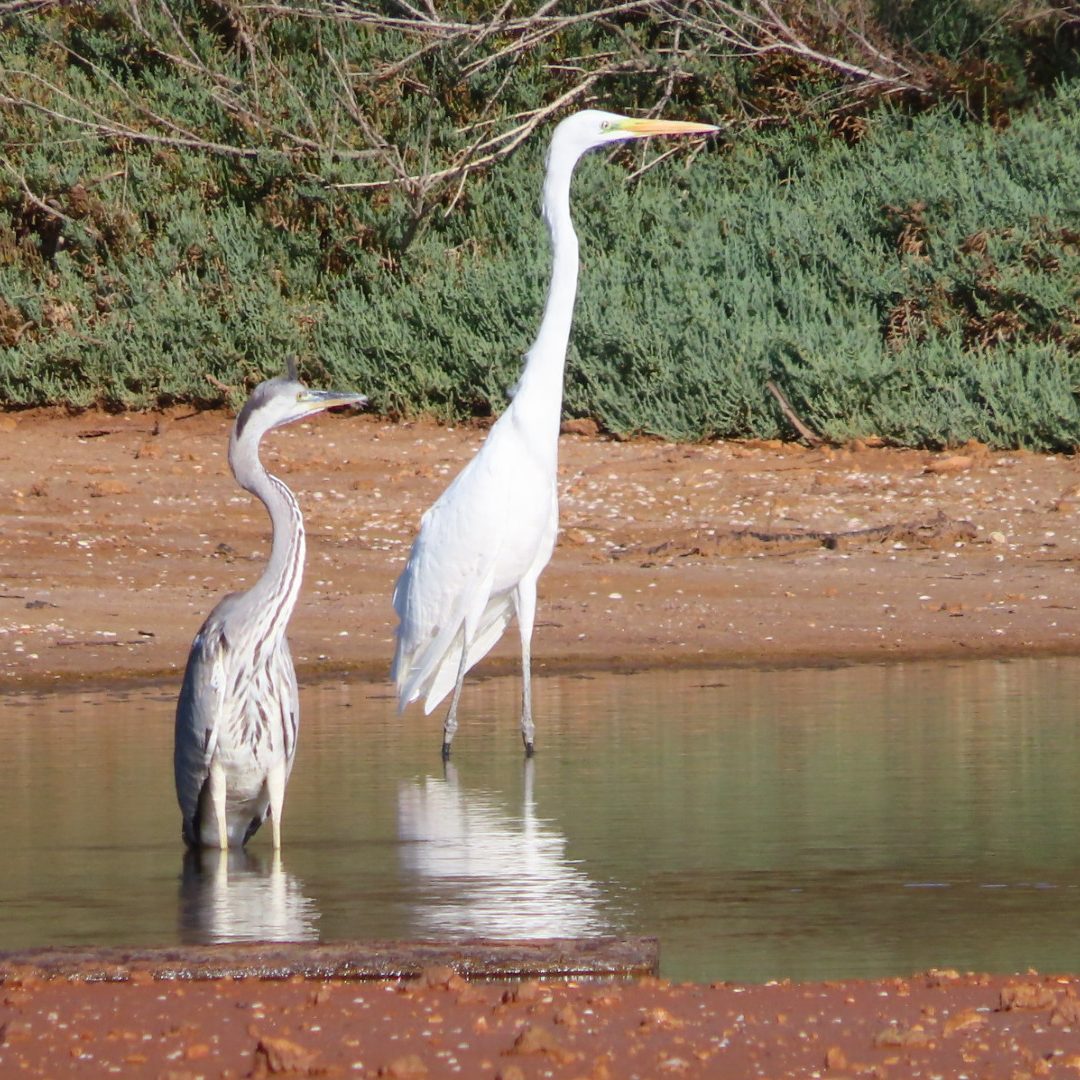
Barn Swallows and Sand Martins were recorded almost daily for most of October. Ospreys were frequently spotted, even catching fish from the reserve, and a hunting Sparrowhawk made an appearance as well. A small number of trans-Saharan species continued to pass through, including Ruff, Honey Buzzard, Marsh-harrier, Hobby, Spotted Flycatcher, Whinchat, and Tree Pipits.
Notable rarities for the month included a Red-breasted Flycatcher, two Caspian Terns, and a Great White Egret.
Works
All works focused on the construction of the hide aiming to be completed by the beginning of November. Amongst works involved were roof construction, plastering, painting, and landscaping.
Simar Nature Reserve
Sightings
With the reeds in full bloom, Simar is gradually reclaiming its unique status as a site with extensive reedbeds, unmatched anywhere else on our islands. Alongside the diverse vegetation typical of brackish habitats, this forms a distinctive wetland ecosystem rich in biodiversity, attracting a variety of migratory and wintering bird species.
October saw numerous bird species passing through Simar, with many choosing to stay for the winter. A small flock of Common Coots, which arrived the previous month, is already well settled. Joining them is a Northern Pintail and a Common Teal, the latter arriving towards the end of the month. A Common Snipe has also made itself at home, often seen feeding in shallow waters and muddy fringes. Water Rails continued to arrive in good numbers, their calls echoing from the dense vegetation. Common Kingfishers have become a regular sight during the winter, alongside Little Grebes and Black-necked Grebes.
Simar’s wetland habitat also attracts several rare or scarce species. Among the rarest sightings was a Little Bunting, alongside a few Yellow-browed Warblers, which are also considered quite rare. Another less common species, the Bluethroat, made appearances on a few days. Additionally, large numbers of more familiar birds, such as Robins, Chiffchaffs, Blackcaps, and Common Starlings, were also observed.
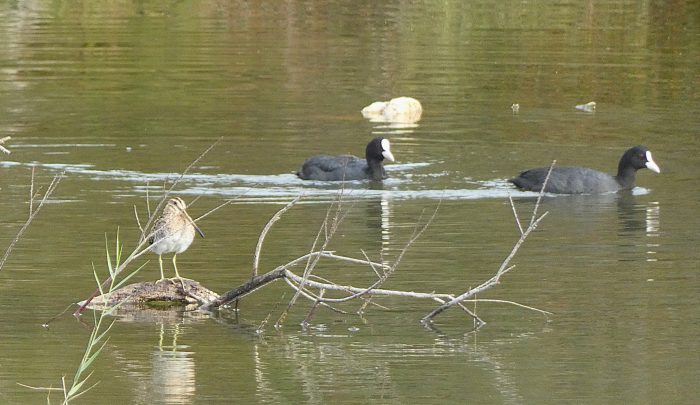
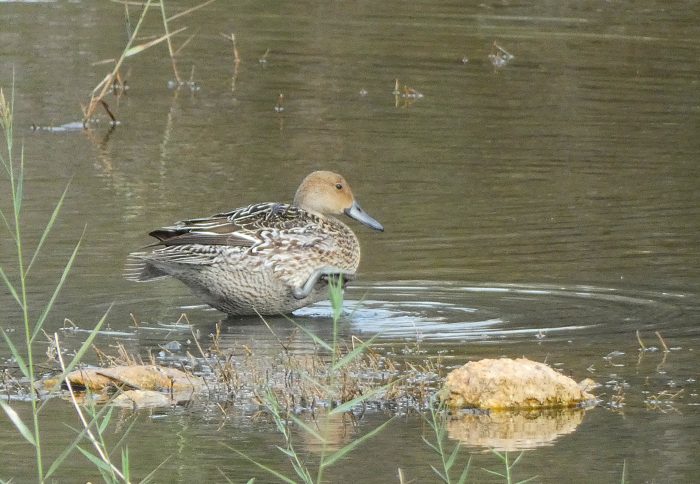
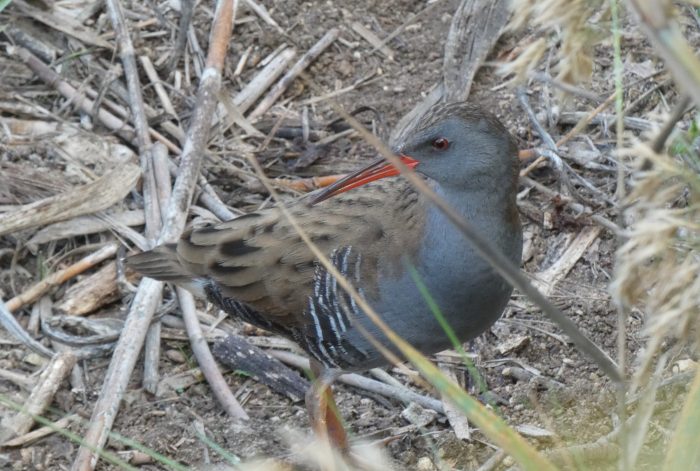
Foresta 2000
Sightings
October marks the peak of migration in Malta, and Foresta 2000 has been vibrant with activity! Moreover, Lentisk bushes full of berries are ready to host the flying travelers. Common migrants like the European Robin, Common Starling, and a few Song Thrushes filled the area with their songs, while Stonechats made their appearance by the end of the month. Blackcaps and Sardinian Warblers have been plentiful, and Common Kestrels were regularly seen soaring overhead. A few swallows lingered, gracefully gliding through the skies each day.
The mild weather has also been ideal for chameleons, which were frequently spotted throughout the reserve. Western Whip Snakes have been active too, with visitors occasionally glimpsing them basking in the sun.
In the world of insects, Foresta 2000 is alive with a variety of butterfly species, including the Painted Lady, Large White, Small White, Common Blue, and Clouded Yellow. Dragonflies like the Scarlet Darter added elegance as they darted over the fresh greenery brought on by recent rains. And Blue Emperor was seen chasing butterflies above the meadows. Slender Red-winged Grasshoppers have also been sighted.
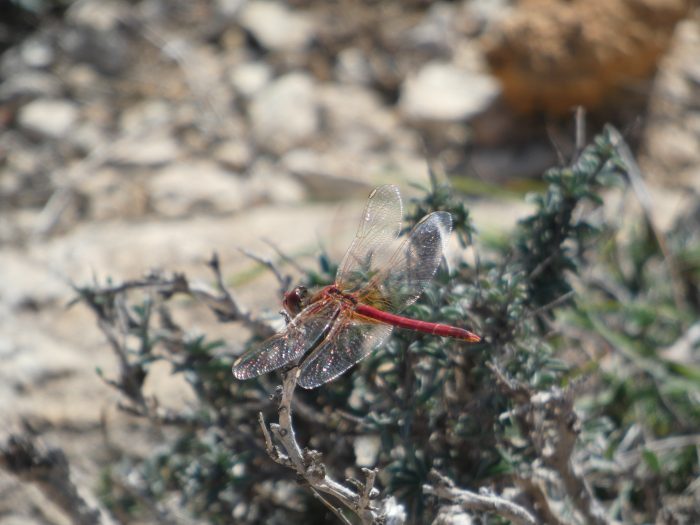
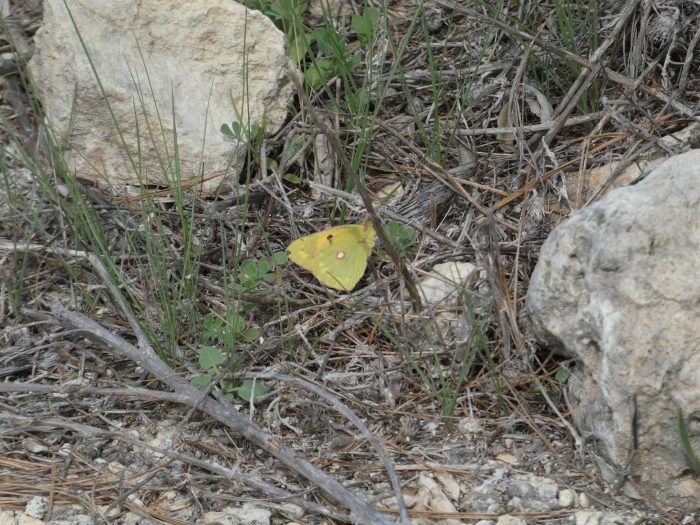
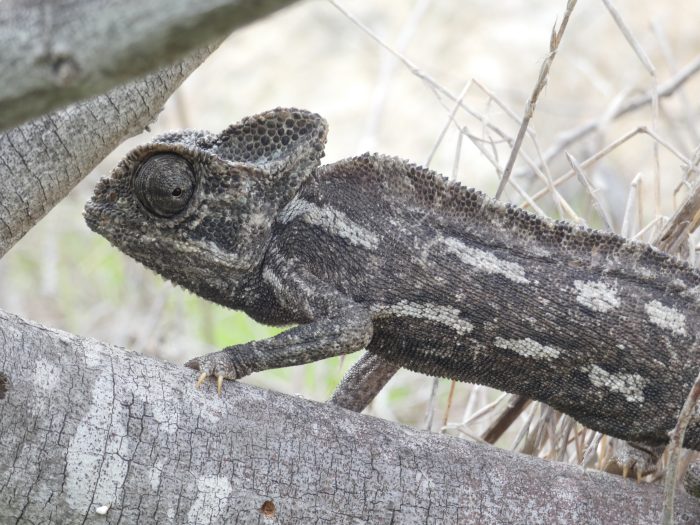
Works
Throughout October, regular maintenance and clean-ups continued with the dedicated help of ESC volunteers from BirdLife Malta. While exploring Foresta 2000, you may notice the Red Tower (St. Agatha’s Tower) covered in scaffolding for minor restoration. Despite the construction, the tower remains open for visits, allowing guests to appreciate its historical significance while enjoying the natural beauty of the reserve.
Notice for All Visitors As winter approaches and the days grow shorter, we are transitioning to our annual winter schedule. We want to remind everyone that our nature reserves, Simar and Għadira, will now be closing at sunset. With the recent time change, it gets darker earlier, and visibility in the reserves becomes limited after sundown. Please plan your visits accordingly so you can enjoy the beauty of nature in full daylight. We look forward to welcoming you and appreciate your help in keeping the reserves safe and enjoyable for all. See you on the trails!

BirdLife Malta objects to new development threatening Simar Nature Reserve
Once again, the buffer zone of Simar Nature Reserve is earmarked for construction of an additional residential building. In response, BirdLife Malta opposed the proposed development in Triq il-Ħaġra l-Wieqfa, Xemxija (PA/05846/24), located within a bird sanctuary and the buffer zone of the Natura 2000 site, Is-Simar. This protected area is one of the few remaining wetlands in the Maltese Islands and is highly protected under the Birds and Habitats Directive. It provides crucial habitats for migratory birds like the Little Bittern, Common Coot, and Little Grebe.
The buffer zone around Is-Simar is already heavily developed, with many buildings exceeding the height restrictions set by the North West Local Plan. The proposed five-story building, exceeding the local four-floor limit, risks increasing light and noise pollution, which could further threaten the integrity of Is-Simar. Constructing 18 new apartments would worsen traffic in Xemxija, an area already known for its seasonal traffic congestion, leading to further noise and reduced air quality.
BirdLife Malta called on the Planning Authority and Environment and Resources Authority to strengthen protections for Is-Simar and prioritise conservation efforts over urban expansion in this ecologically sensitive area.
BirdLife Malta Objects Wied Għomor Development Threatening Rural Landscape
Wied Għomor, one of the few remaining open green spaces in Malta’s urbanised North Harbour area, is again under threat from new development plans. The planning application (PA/06798/24) proposes the expansion of a pre-1967 rural structure, doubling its size to create a modern three-story building with parking and a swimming pool, replacing the existing traditional structure.
BirdLife Malta has filed an objection, citing conflicts with sustainable rural development and environmental priorities. The proposal violates several planning policies, including the Rural Policy and Design Guidelines (RPDG), due to its significant lateral and vertical expansion, its incompatibility with the rural character, and its potential to visually dominate the landscape. Furthermore, the development undermines the Strategic Plan for Environment and Development (SPED), which prioritizes rehabilitating and enhancing degraded landscapes.

An Elusive Wader on Malta’s Coasts
The Sanderling is a small, stout wader, with a thick bill and black legs. Its diet consists mainly of small invertebrates, which it locates by probing its bill in the soft mud. The non-breeding winter plumage is very pale, almost white, with a pale grey back and a dark shoulder patch.
In spring, it starts to attain its breeding plumage, which sees the face and throat become brick-red, and its back feathers turn rufous red with black centers. It is an Arctic breeder, and a long-distance migrant, traveling between 3,000 to 10,000 km from its breeding grounds to its wintering sites in Southern Europe and Africa. Most adults leave the breeding grounds in July and early August, whereas juvenile birds leave in late August and early September.
Its status in Malta is that of a scarce spring and autumn migrant; sightings, which are very few, are mostly of single birds. Most records are of birds seen in May, but occasional sightings can also occur in autumn between August and September. One can come across this rare wader mostly on rocky coasts, but Għadira and Salina Nature Reserves are good places to see it as well.
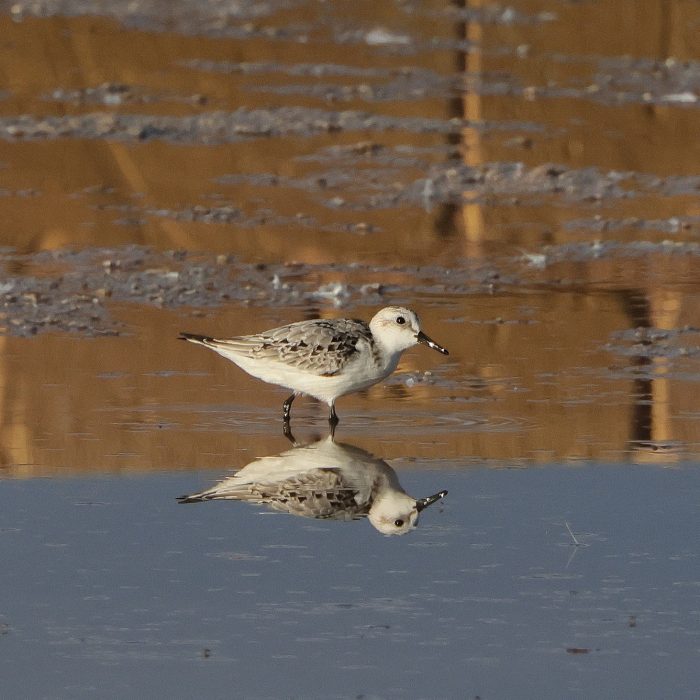
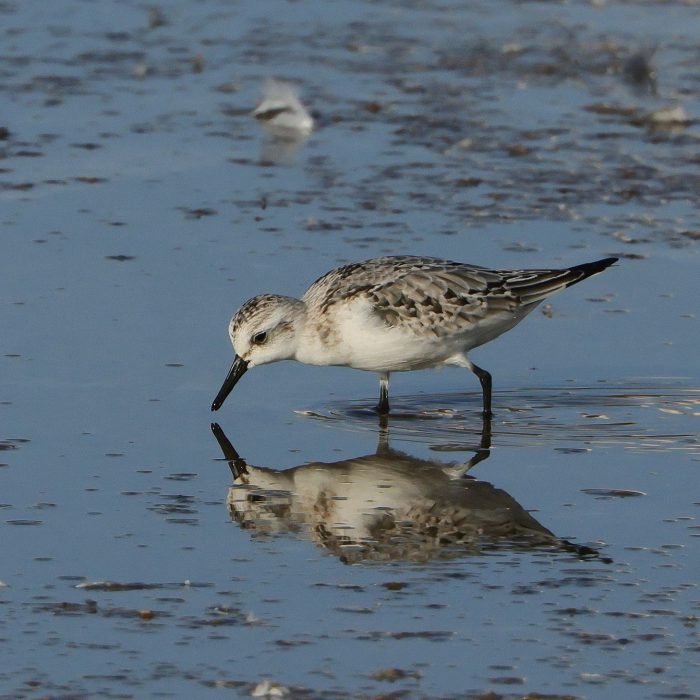
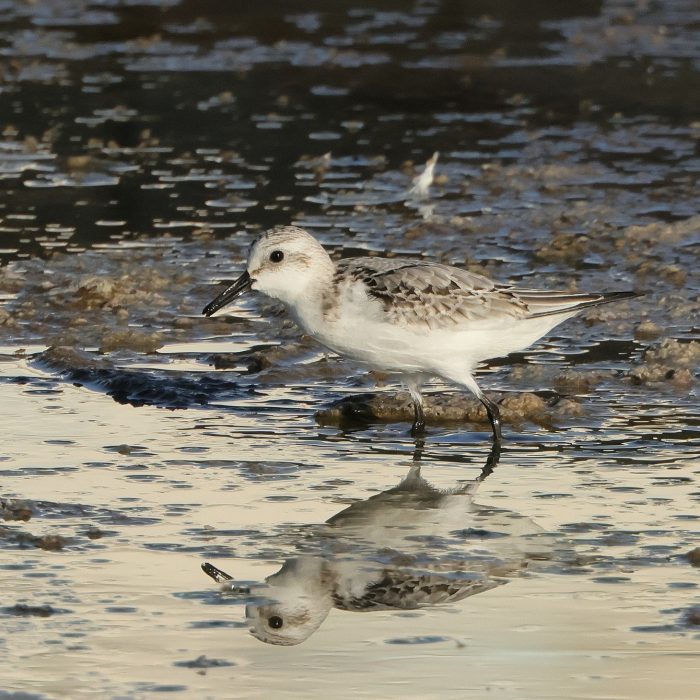
A Snake-eagle’s Daring Feast
On Sunday, 29th September, BirdLife Malta volunteers had an unforgettable experience while keeping watch over a young Short-toed Snake-eagle. As the majestic bird settled in for a quiet roost, it surprised everyone with a bold move—swooping down and snatching up a snake that had ventured out, unknowingly becoming the eagle’s next meal! Talk about a Snake-eagle living up to its name!
Short-toed Snake-eagles are rare, annual migrants, often targeted by poachers as has been the case on September 24th in the limits of Mġarr, Malta, where a short-toed eagle was shot dead. The poacher has been given a lifetime hunting ban after he pleaded guilty to shooting the protected bird.
These moments remind us why it’s so crucial to protect Malta as a safe resting and feeding ground for these magnificent birds. Every encounter strengthens our resolve to ensure their safety.
European Bee-eaters: nature’s insect control on their autumn migration
Every autumn, European Bee-eaters embark on an incredible migration from Europe to Africa, with some making a stop in Malta to refuel. These vibrant birds rely on flying insects to sustain their long journey, skillfully catching them mid-air. Insects are not only vital for feeding birds like the bee-eater but also for pollinating plants. As these birds migrate, they help us too by acting as natural pest control, keeping mosquitoes and crop-damaging insects in balance.
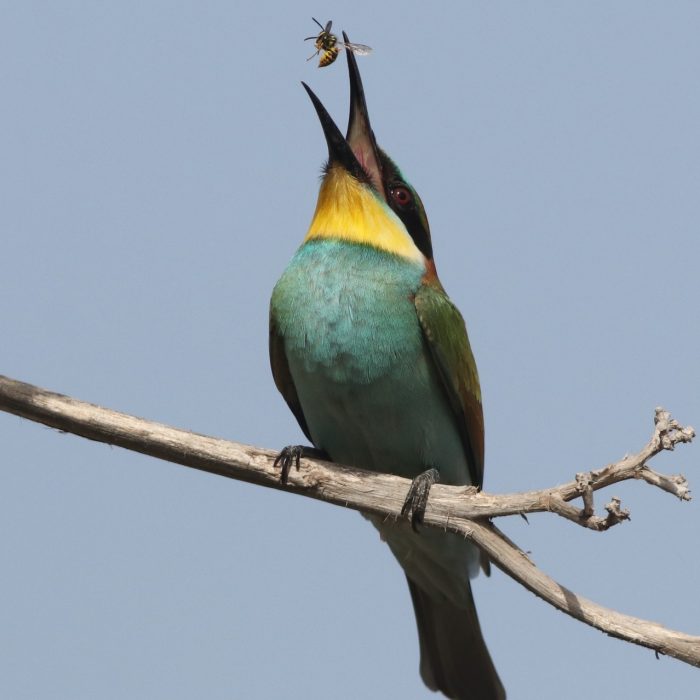
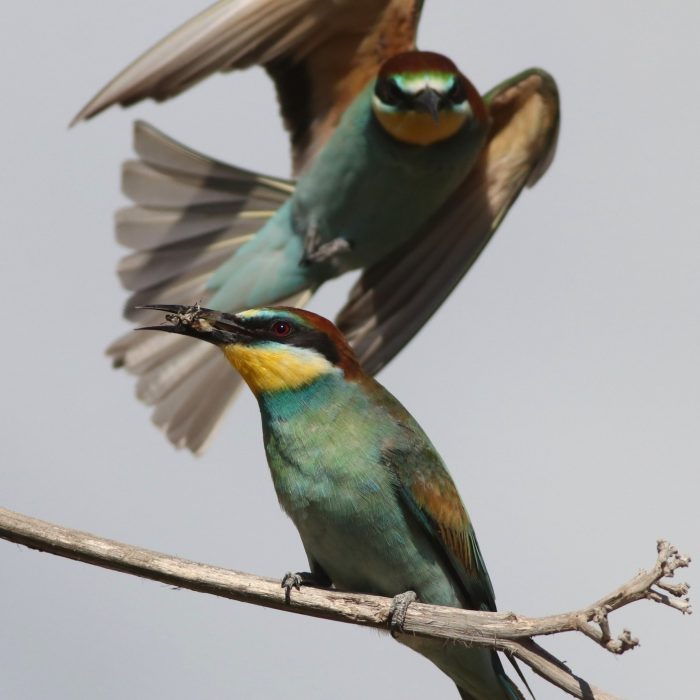
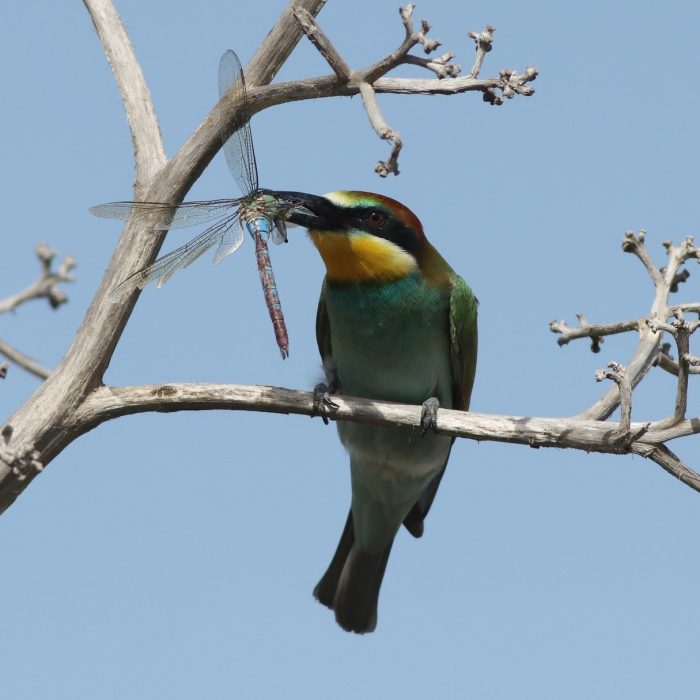
Credits
Words: Charles Coleiro, David Attard, Isabel Celeste, Justine Borg, Khouloud Belhadj, Manuel Mallia, Marcella Giornetti, Mario V Gauci, Vera Tokmakova, Alessia Merson
Photographs: Aron Tanti, Charles Coleiro, Davide Attard, Isabelle Celeste, Mario V Gauci, Vera Tokmakova, Mark Gauci, Manuel Mallia, Yusuf Gamal
Editing: Khouloud Belhadj

